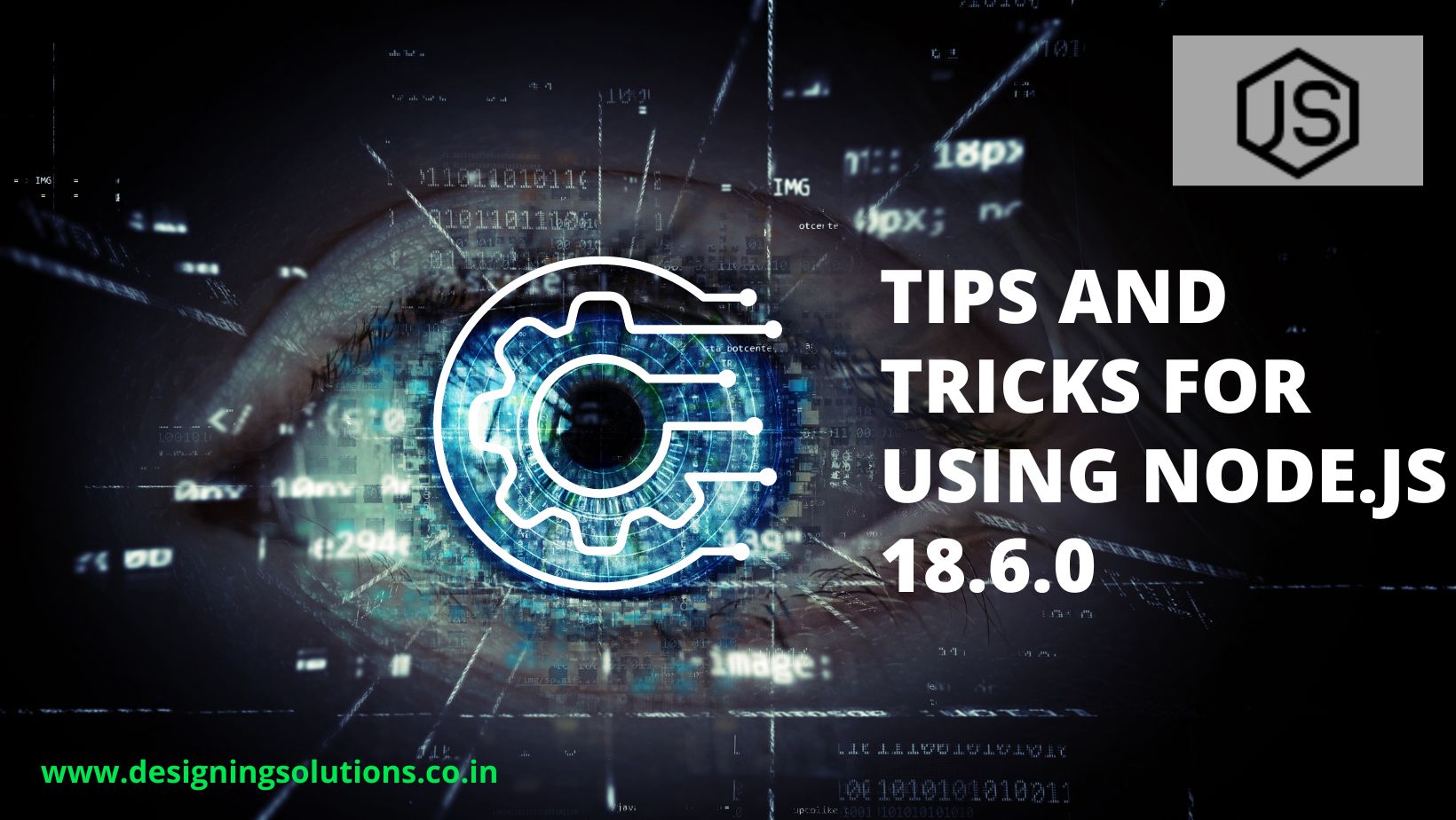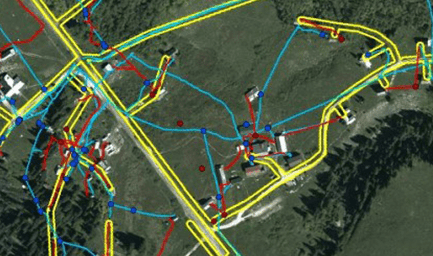Introduction
Node.js 18.6 is a powerful new version of the popular JavaScript runtime environment. It comes with a number of new features and enhancements that can help you build better, faster, and more scalable applications. Read along to know everything about the topic.
Use Concurrent Rendering
The latest release of Node.js, version 18.6.0, introduces a new feature called Concurrent Rendering. This feature allows Node.js to render multiple components at the same time, which can significantly improve the performance of your applications.
Traditionally, Node.js would render components one at a time, which could lead to delays and a poor user experience. Concurrent Rendering solves this problem by breaking down rendering tasks into smaller segments and rendering them concurrently. This ensures that resources are used efficiently and that your application feels more responsive.
To implement Concurrent Rendering in your Node.js application, you can use the following code snippet:
javascript
Copy code
import React, { unstable_ConcurrentMode as ConcurrentMode } from ‘react’;
function App() {
return (
<ConcurrentMode>
{/* Your concurrently rendered components */}
</ConcurrentMode>
);
}
To enable Concurrent Rendering, you can wrap your components within the <ConcurrentMode> element. This will tell Node.js to render your components concurrently.
Concurrent Rendering is a powerful new feature that can help you create more efficient and responsive applications. If you’re using Node.js 18.6.0 or later, I encourage you to try it out.
Here are some specific examples of how Concurrent Rendering can benefit your applications:
Improved Performance on Slow Devices: Concurrent Rendering can help to improve the performance of your applications on devices with limited processing power. This is because it allows Node.js to use all of the available resources to render your components.
Reduced Latency: Concurrent Rendering can help to reduce the latency of your applications. This is because it allows Node.js to render components more quickly.
Smoother User Experience: Concurrent Rendering can help to create a smoother user experience for your applications. This is because it reduces the amount of time that users have to wait for components to render.
Use Automatic Batching
Node.js 18.6.0 introduces a powerful new feature called Automatic Batching. This feature can significantly improve the performance of your applications by simplifying the management of state updates and DOM mutations.
Traditionally, Node.js would handle each state update and DOM mutation individually. This could lead to a lot of overhead, especially in applications with frequent updates. Automatic Batching solves this problem by grouping together state updates and DOM mutations and handling them as a single unit. This can significantly reduce the number of browser repaints, which can improve the performance of your applications.
Automatic Batching is enabled by default in Node.js 18.6.0. However, you can disable it if you need to. To disable Automatic Batching, you can set the process.env.NODE_AUTO_BATCH environment variable to 0.
Here are some specific examples of how Automatic Batching can benefit your applications:
Improved performance: Automatic Batching can help to improve the performance of your applications by reducing the number of browser repaints. This is especially beneficial for applications with frequent updates.
Reduced latency: Automatic Batching can help to reduce the latency of your applications by reducing the number of times that the browser has to repaint the screen.
Smoother user experience: Automatic Batching can help to create a smoother user experience for your applications by reducing the number of times that users have to wait for updates to be applied.
Implementing Automatic Batching is straightforward. Consider the following code snippet:
javascript
Copy code
import React from ‘react’;
function App() {
// State changes and DOM mutations are automatically batched
return (
<div>
{/* Your app content */}
</div>
);
}
Automatic Batching is a new feature in Node.js 18.6.0 that can significantly improve the performance and user experience of your applications. Automatic Batching groups together state updates and DOM mutations and handles them as a single unit. This can significantly reduce the number of browser repaints, which can improve the performance of your applications.
Use the useDeferredValue Hook
The latest release of Node.js introduces a new hook called useDeferredValue. This hook can be used to lazy-load components, which can significantly improve the performance of your applications.
Lazy loading is a technique that loads components only when they are needed. This can help to improve performance by reducing the number of components that are loaded at once.
The useDeferredValue hook makes it easy to lazy load components in Node.js. To use the hook, you first need to create a deferred value. A deferred value is a promise that resolves to a value.
Once you have created a deferred value, you can use the useDeferredValue hook to lazy load a component. The useDeferredValue hook takes two arguments: the first argument is the deferred value, and the second argument is the component to load.
When the component is rendered, the useDeferredValue hook will resolve the deferred value and load the component. If the component is not visible to the user, the deferred value will not be resolved and the component will not be loaded.
The useDeferredValue hook is a powerful tool that can be used to improve the performance of your Node.js applications. If you are looking for ways to improve the performance of your applications, I encourage you to try using the useDeferredValue hook.
Here are some of the benefits of using the useDeferredValue hook:
Improved performance: Lazy loading can help to improve the performance of your applications by reducing the number of components that are loaded at once. This can be especially beneficial for applications with large numbers of components or complex dynamic content.
Reduced bandwidth usage: Lazy loading can help to reduce bandwidth usage by only loading components that are needed. This can be especially beneficial for applications that are served over slow connections.
Improved user experience: Lazy loading can help to improve the user experience by making your applications more responsive. This is because components are only loaded when they are needed, so users do not have to wait for unnecessary content to load.
Implementing the useDeferredValue hook is straightforward and offers a distinct advantage:
javascript
Copy code
import React, { useDeferredValue } from ‘react’;
function App() {
const deferredValue = useDeferredValue(someComponent);
return (
<div>
{deferredValue}
{/* Other components */}
</div>
);
}
The useDeferredValue hook is a powerful new feature in Node.js that can be used to lazy-load components. Lazy loading is a technique that loads components only when they are needed. This can help to improve performance by reducing the number of components that are loaded at once.
The useDeferredValue hook is easy to use and can be incorporated into your development process with minimal effort. To use the hook, you first need to create a deferred value. A deferred value is a promise that resolves to a value.
Once you have created a deferred value, you can use the useDeferredValue hook to lazy load a component. The useDeferredValue hook takes two arguments: the first argument is the deferred value, and the second argument is the component to load.
When the component is rendered, the useDeferredValue hook will resolve the deferred value and load the component. If the component is not visible to the user, the deferred value will not be resolved and the component will not be loaded.
The useDeferredValue hook is a powerful tool that can be used to improve the performance of your Node.js applications. By incorporating this feature into your development process, you can ensure that your app loads efficiently and serves an optimized experience to your users.
Here is an example of how to use the createRoot function:
import { createRoot } from ‘react-dom/client’;
const rootElement = document.getElementById(‘root’);
const root = createRoot(rootElement);
root.render(<App />);
In this example, we first import the createRoot function from the react-dom/client module. Then, we get the DOM node where we want to render our application and store it in the rootElement variable. Finally, we call the createRoot function, passing in the rootElement variable and an empty options object.
The createRoot function returns a Root object. The Root object exposes a render method that can be used to render components into the root context.
Here is an example of how to use the Root object’s render method:
root.render(<App />);
In this example, we call the render method on the root object, passing in a component. The render method will render the component into the root context.
The createRoot function is a powerful tool that can be used to isolate different parts of your application. By isolating different parts of your application, you can improve the performance and security of your application.
Here are some of the benefits of using the createRoot function:
Performance: Isolating different parts of your application can help to improve the performance of your application by reducing the amount of code that needs to be loaded and executed.
Security: Isolating different parts of your application can help to improve the security of your application by making it more difficult for attackers to exploit vulnerabilities.
Flexibility: The createRoot function gives you more flexibility in how you structure your application. You can create multiple root contexts, each with its own set of data and functions.
Use The createRoot Function
The createRoot function is a new function that was introduced in Node.js 18.6.0. It allows you to create a new root context. A root context is a global object that can be used to store data and functions that are accessible to all components in your application.
The createRoot function takes two arguments:
The first argument is the DOM node where you want to render your application.
The second argument is an options object. The options object can be used to configure the root context.
Here is an example of how to use the createRoot function:
import { createRoot } from ‘react-dom/client’;
const rootElement = document.getElementById(‘root’);
const root = createRoot(rootElement);
root.render(<App />);
In this example, we first import the createRoot function from the react-dom/client module. Then, we get the DOM node where we want to render our application and store it in the rootElement variable. Finally, we call the createRoot function, passing in the rootElement variable and an empty options object.
The createRoot function returns a Root object. The Root object exposes a render method that can be used to render components into the root context.
Here is an example of how to use the Root object’s render method:
root.render(<App />);
In this example, we call the render method on the root object, passing in a component. The render method will render the component into the root context.
The createRoot function is a powerful tool that can be used to isolate different parts of your application. By isolating different parts of your application, you can improve the performance and security of your application.
Here are some of the benefits of using the createRoot function:
Performance: Isolating different parts of your application can help to improve the performance of your application by reducing the amount of code that needs to be loaded and executed.
Security: Isolating different parts of your application can help to improve the security of your application by making it more difficult for attackers to exploit vulnerabilities.
Flexibility: The createRoot function gives you more flexibility in how you structure your application. You can create multiple root contexts, each with its own set of data and functions.
Use the SuspenseList Component
The SuspenseList component is a new component that was introduced in Node.js 18.6.0. It allows you to lazy-load lists of data. This can improve the performance of your application by only loading the data that is actually visible to the user.
The SuspenseList component takes two arguments:
The first argument is the data that you want to lazy-load.
The second argument is a function that is used to render the list of data.
Here is an example of how to use the SuspenseList component:
const data = [1, 2, 3, 4, 5];
const SuspenseList = ({ data }) => {
return (
<ul>
{data.map((item) => (
<li key={item}>{item}</li>
))}
</ul>
);
};
const App = () => {
return (
<SuspenseList data={data} />
);
};
In this example, we first create an array of data. Then, we create a SuspenseList component and pass in the data array as an argument. The SuspenseList component will lazy-load the data array and render it as a list of items.
The SuspenseList component is a powerful tool that can be used to improve the performance of your Node.js applications. By lazy-loading lists of data, you can improve the performance of your application by only loading the data that is actually visible to the user.













